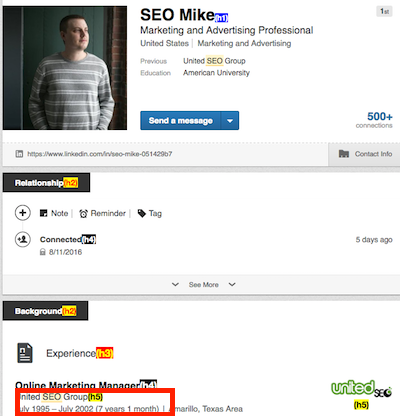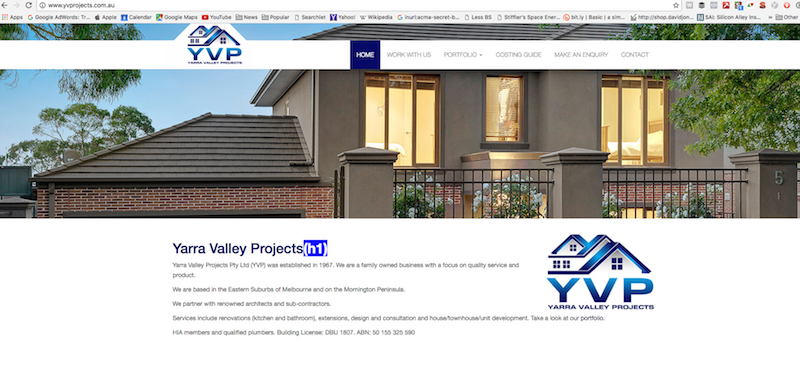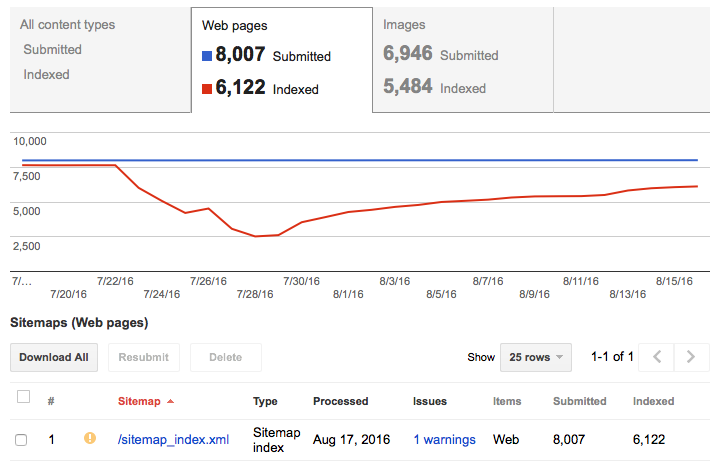Google Not Indexing My Site
Welcome back Rankers! Hope you’re having a good week. It looks like spring is finally here. Yay! I received an email from Mike SEO this week, which I wanted to go over. It was a wonderfully written piece, worthy of any publication, and this is what Mike SEO had to say,

Now Mike, the smooth talking devil, hit me up on LinkedIn, and he works in the United States for the United SEO Group, where he finished working there in 2002.

Seems perfectly legit to me. I think I’ll cut a cheque and buy a bunch of those links. Not. Incidentally, I had another local SEO company who contacted us during the week wanting to sell us links as well. I said we’d be very interested (wink, wink) so I can find out which sites they are selling links to. Don’t buy backlinks, kids. Just say no. It always ends in tears.
Do You Need Backlinks for SEO?
Now that’s not to say you don’t need backlinks. You do. Here’s one situation where you do. An old friend, Yvonne Adele, asked me to take a look at this site.

It’s for a friend of hers, Yarra Valley Projects (YVP), and she said that for some reason it’s not in the index. And she’s right. If we do a site: search there’s nothing there, not even the www’s. I’ve checked MajesticSEO for backlinks and there are none. Now it’s a fairly new site, but the fact that there’s nothing in the index leads me to believe there’s a problem. The first thing I do in this situation when you have a new site and you don’t seem to be getting any love from Google, is check the robots.txt to make sure the developer hasn’t blocked access to Google. Quite often it can be something as simple as that. The site goes live and the developer forgets that they had a robots.txt on it blocking the search engines from getting to it. Not the case in this situation.

Here you can see our robots.txt and it’s telling search engines not to go to the /wp-admin/ area, which is not a cause for blocking Google from the site. Then I’ll go and see if there’s a noindex tag on the homepage, as I’ve seen that happen before. It can be in place during development and isn’t removed before going live. But that wasn’t the cause either.
Submit Your Sitemap
Now it is a WordPress site, with plugins, but what doesn’t seem to be installed is Yoast. My recommendation is to have Yoast installed and get a sitemap organised before getting some basic backlinks. They won’t need many. They are in the Yarra Valley, so maybe go and sponsor the local footy team. If you already do sponsor the footy team, get a backlink from them. Yellow Pages, True Local, any of those old local directories is a good start to get listed in. Right now, they don’t have any backlinks, so you just need to get the ball rolling. At this moment, Google probably doesn’t even know they exist, as there’s no Google sitemap set up either, not in any of the usual places anyhow. Typically on a WordPress site, it would be found (in this case) www.yvprojects.com.au/sitemap.xml, as they don’t have Yoast set up. If you do have Yoast set up, it would be something like sitemap_index.xml. These have to be submitted to Google via the Google Search Console. I’m assuming that hasn’t been done, as I didn’t get any results. Submitting a sitemap is the fastest way to get Google to come to your site. If it’s still taking time, you can get Google to fetch things as well. If we take a look at this sitemap which I prepared earlier,

I can click into any sitemap submitted by me and with this particular site you can see there is a warning because I’ve alerted the client that I can’t make changes to this site as it’s a corporate site and they have their own developers that do that. If you do happen to have a warning or error in your sitemap area, fix it ASAP.
Sitemap Maintenance
Check your sitemap once a fortnight unless you have problems. For this client I’m checking every day as we made a change on the 22nd July and there was a distinct drop in pages indexed. The reason for that was we made the URLs more search engine friendly, so the site has better URLs, resulting in better rankings and improved SEO for them. The downside is Google takes time to re-crawl everything. It is taking some time to get back up there. The reason for that, I believe, is it being a symptom of another problem. In my experience, being slow to index can be a cause of items like the login page, thank you pages, things that you do not want in the sitemap being in the sitemap. Anything you don’t want Google to find, do not have them in the sitemap. With this client, their login page is generating a session I.D. so every time Google goes back it is getting a different URL for that login. So the problem is lots of URLs in the sitemap that Google can’t do anything with. I think Google allocates each site a sitemap budget to every site it crawls, and in this case it’s wasting a lot of that budget crawling things we don’t want it to. Index Conclusions So the rule of thumb is if you have problems with your sitemap, get them fixed immediately. If it’s a brand new site and hasn’t been indexed, do the sitemap obviously, setup Google my business, then get a few local backlinks, and share it on social media. Get a Facebook account; get a Twitter account, Instagram account. Now I know with many of these accounts the backlinks are nofollow, but that doesn’t mean that Google actually nofollows. You just need to be out there, getting other ways for the search engines and other people to find your site. Hopefully that’s helpful. See you next week. Bye.

Jim’s been here for a while, you know who he is.


